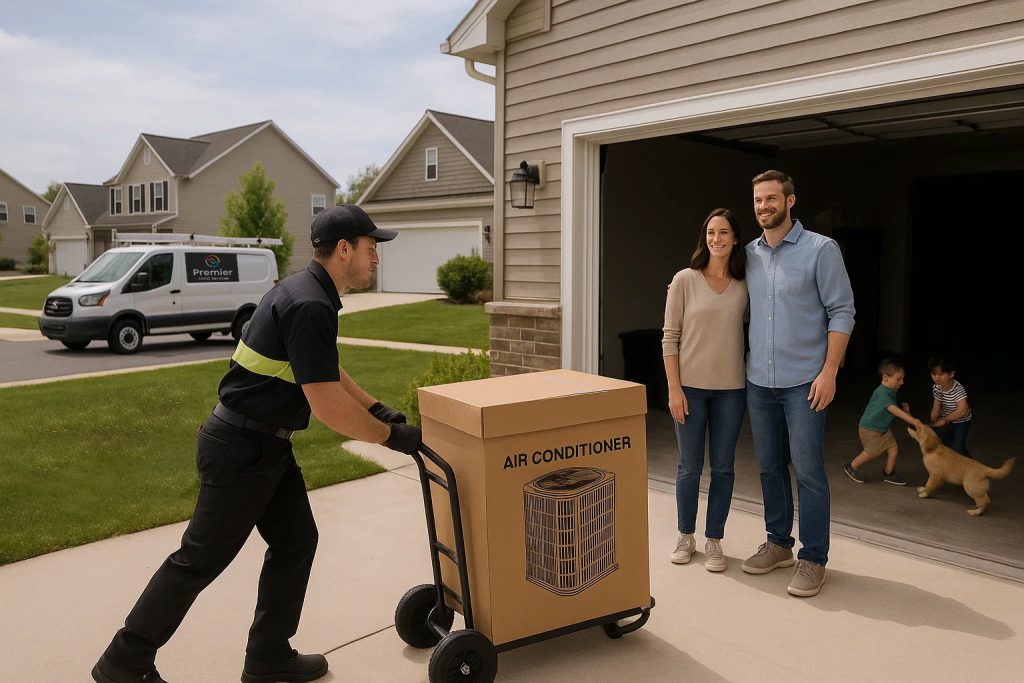If you’ve recently tried to schedule air conditioning service or a heat pump repair, you may have heard your technician mention a refrigerant shortage, specifically of R-454 B. This isn’t just industry jargon; the refrigerant transition is very real and may impact everything from repair costs to system replacements for homeowners across the U.S.
So, what’s going on with refrigerants like 454B, and how might it affect you? Let’s break it down in simple terms so you can make informed decisions about your home’s comfort system.

What Is R-454B?
R-454B is a next-generation refrigerant developed as part of the HVAC industry’s effort to move away from high global warming potential (GWP) refrigerants like R-410A. Compared to older refrigerants, R-454B offers significantly lower environmental impact while maintaining similar performance in air conditioners and heat pumps.
As of January 1, 2025, manufacturers are required to stop producing HVAC systems that use R-410A for residential and light commercial applications due to new federal environmental regulations. In its place, refrigerants like R-454B are becoming the new standard.
Why Is There a Refrigerant Shortage?
There are several factors driving the current shortage of R-454B:
- High demand for new units – With the approaching regulatory deadline, manufacturers and contractors have been rushing to build and stock equipment compatible with R-454B. This has rapidly increased demand, while supply chains are still catching up.
- Limited production capacity – Because R-454B is relatively new to the market, there are fewer production facilities worldwide capable of manufacturing it at scale. Scaling up refrigerant production takes time, equipment, and regulatory approvals.
- Logistical challenges – Like many other goods, refrigerants are also subject to shipping delays and transportation issues—especially with new safety protocols, storage requirements, and international regulations for flammable refrigerants like R-454B.
- EPA and AIM Act uncertainty – While the Environmental Protection Agency (EPA) has issued guidance on the refrigerant transition under the AIM Act, recent federal actions and petitions for reconsideration have caused confusion. Although most of these changes do not currently impact the 2025 transition, uncertainty in the market has made manufacturers and contractors cautious about overstocking or under-ordering.
What does this mean for homeowners?
- Higher repair costs – If your system needs a refrigerant recharge or replacement component, limited availability of R-454B or other refrigerants may drive up the cost of service.
- Longer wait times for new units – As supply tightens and demand increases (especially during peak summer season), ordering a new air conditioner or heat pump may take longer than usual.
- Fewer compatible parts – With R-410A being phased out, fewer components and replacement parts are being manufactured for older systems. If your unit uses R-410A, repairs may become more expensive or even impractical in the near future.
Should You Replace Your System Now?
If your current AC or heat pump is 10 years or older, now may be the ideal time to consider upgrading before the transition is fully enforced and prices rise further. Installing a new system that uses R-454B ensures you’re getting the latest in energy efficiency and environmental compliance. Plus, acting now may help you avoid summer delays and take advantage of available rebates or financing.
How We’re Helping Homeowners Navigate the Transition
We’re staying ahead of the refrigerant transition so you don’t have to worry. Here’s what we’re doing to help:
- Stocking new systems compatible with R-454B
- Training our technicians on safe handling and servicing of low-GWP refrigerants
- Offering maintenance plans to extend the life of your current system
- Providing honest recommendations on when repair or replacement makes the most sense
To schedule your AC or heat pump service, contact Premier HVAC Services today!
